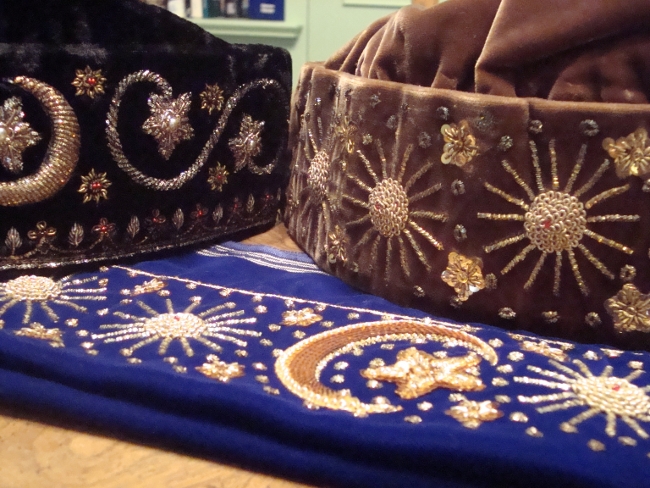In December 2010 Dr. Shakeela Hassan, retired University of Chicago anesthesiologist, attended a Lunch Event of the Inner-City Muslim Action Network (IMAN) at the Hyatt Regency-McCormick Place in Chicago, one of many such events she attends as a leading Chicago philanthropist. She picked up her table number. Number 22. Not number 1, she thought, and not number 165. Somewhere in the middle. She liked that. When she found her table it was right in front of the speaker’s podium. Three women were already seated at the table. They motioned to her to join them. Then Keith Ellison, the first U.S. congressman to identify as a Muslim, Democrat of Minnesota, joined the table. Ellison and Hassan had not previously met. As they talked, men and women came up to Hassan greeting her and hugging her. Finally, Ellison said, “You seem to know everyone.” “Yes,” she said, “they are my faith and my family.”
“They” are the wider community of the Nation of Islam, some still members, some not. “They” are those who welcomed and nurtured Hassan when she came to the U.S. from Pakistan as a young doctor in the late 1950s. Dr. Hassan came to take up an internship at Northwestern University Hospital, eventually choosing to specialize in anesthesiology, and then to a teaching appointment at the University of Chicago Hospitals. As a young woman in her early twenties, new to Chicago, and not entirely comfortable with American student life, her husband-to-be Zia Hassan introduced her to Elijah Muhammad, as well as to Muhammad’s wife, Sister Clara, and their eight children.
As she sees it now, looking back half a century, as she began her professional career she also launched her spiritual path. Dr. Hassan’s life as a Muslim in the United States displays unexpected conjunctions challenging us to enlarge our assumptions about the Nation of Islam, its forms of spirituality, and the ways its practices of food and dress produce and cultivate forms of piety across cultures, continents and generations. Now working with Bill Kurtis to produce a film about sounds in the three Abrahamic traditions, Dr. Hassan traces the beginnings of her interfaith sensibility to the generosity and hospitality of “them”—Elijah and Clara Muhammad, her first U.S. family in faith (as well as the nuns who welcomed her at St. Mary of Nazareth hospital in Chicago where she also worked as a young resident physician.)
Zia Hassan, Hassan’s husband, had met Elijah Muhammad through his older brother, who had preceded him to the U.S. Zia’s brother, a thoracic surgeon, had himself met Elijah Muhammad when he treated him as a patient, and had been invited to his home. At that time, Zia’s brothers-in-law were the Pakistani publishers of the most widely sold English translation of the Qu’ran. When Zia Hassan’s brother mentioned to Elijah Muhammad that his younger brother would be coming to the U.S. to study, the leader of the Nation insisted on having them met at the airport in New York City. The young man Elijah Muhammad sent to greet Zia Hassan and his brother that day was none other than Malcolm X.
Shakeela Hassan remembers many evenings sitting at the dining room table in Elijah Muhammad’s house. Sometime in the late 1950s he said that he wanted a special hat for a special occasion: a fez. As they sat talking, she drew a hat on a piece of paper, combining a Pakistani style with what she proposed as symbols of the Nation of Islam, namely a Crescent and Star woven into the design motif. She bought fine velvet fabric at Marshall Field’s department store, fabric which she sent back to Lahore with friends who arranged for the embroidery to be applied to her specification. It was the first of many she would have made in different colors:
When she speaks of Elijah Muhammad and Sister Clara today, now some fifty years later, Dr. Hassan speaks warmly of their hospitality—of how food was brought to her house when each of her children were born—of how she learned to make a soup that she still makes in quantity to share with friends and family—of how Sister Clara arranged for clothes to be made for her at the Nation’s clothes factory, jackets and long skirts that Sister Clara thought suitable and dignified for Shakeela Hassan to wear as a woman doctor in a hospital. Some of the clothes that were designed for the women of the Nation were, in turn, modeled on the shalwar kameez that Shakeela had worn when Sister Clara first met her. The long tunic tops and “baggy pants” of her home country now became the inspiration for the distinctive dress of the women of a new American religious movement.
Page 1 of 3 | Next page
